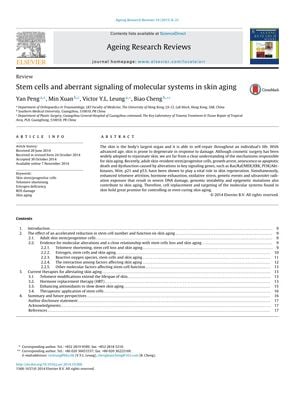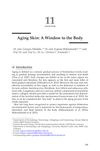Stem Cells and Aberrant Signaling of Molecular Systems in Skin Aging
November 2014
in “
Ageing Research Reviews
”

TLDR Skin aging is caused by stem cell damage and can potentially be delayed with treatments like antioxidants and stem cell therapy.
The 2015 review discussed the impact of adult skin-resident stem/progenitor cells (SKPs) on skin aging, noting that their dysfunction or loss leads to a decline in skin thickness, wrinkles, and other aging signs. It explained that skin aging involves telomere shortening, DNA repair defects, oxidative stress, and genetic/epigenetic changes that damage these stem cells, resulting in skin homeostatic imbalance and aging. The review also covered potential therapies, such as antioxidants, hormone replacement therapy, and stem cell-based treatments, which may delay or prevent skin aging. It stratified skin aging into three phases related to stem cell damage, decline in regenerative abilities, and stem cell exhaustion or dysfunction, which contribute to age-related skin changes. The importance of understanding adult stem cells for regenerative medicine was emphasized, along with the characteristics and functions of various stem/progenitor cell subpopulations in skin health and regeneration.









